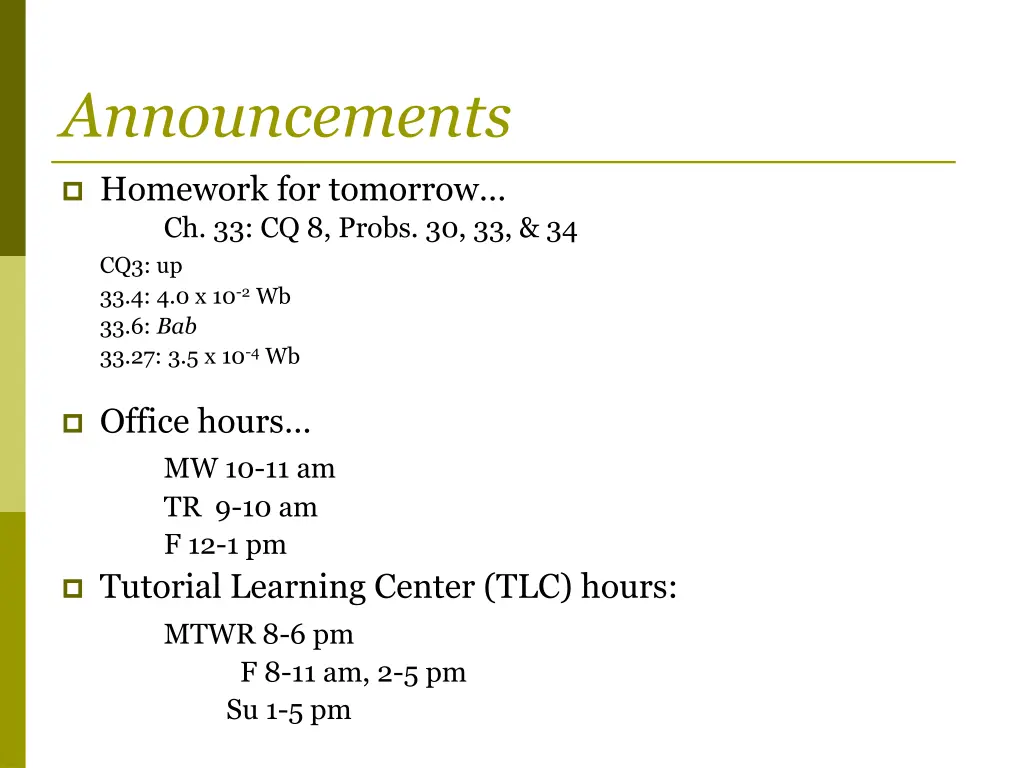
Electromagnetic Induction: Faraday's Law Explained with Examples
Discover the principles behind Faraday's Law of electromagnetic induction through detailed explanations and real-life examples. Understand how changing magnetic flux and magnetic field variations induce currents, and explore the implications in scenarios like MRI machines. Dive into the concept of motional emf and its significance in current generation.
Download Presentation

Please find below an Image/Link to download the presentation.
The content on the website is provided AS IS for your information and personal use only. It may not be sold, licensed, or shared on other websites without obtaining consent from the author. If you encounter any issues during the download, it is possible that the publisher has removed the file from their server.
You are allowed to download the files provided on this website for personal or commercial use, subject to the condition that they are used lawfully. All files are the property of their respective owners.
The content on the website is provided AS IS for your information and personal use only. It may not be sold, licensed, or shared on other websites without obtaining consent from the author.
E N D
Presentation Transcript
Announcements Homework for tomorrow Ch. 33: CQ 8, Probs. 30, 33, & 34 CQ3: up 33.4: 4.0 x 10-2Wb 33.6: Bab 33.27: 3.5 x 10-4Wb Office hours MW 10-11 am TR 9-10 am F 12-1 pm Tutorial Learning Center (TLC) hours: MTWR 8-6 pm F 8-11 am, 2-5 pm Su 1-5 pm
Chapter 33 Electromagnetic Induction (Faraday s Law)
Last time Lenz s Law is There IS an induced current in a closed, conducting loop if and only if the magnetic flux through the loop is changing. The direction of the induced current is such that the induced B-field opposes the change in flux. Faraday s Law is
What does Faradays law tell us? Faraday recognized that ALL induced currents are associated with a changing magnetic flux. Two different ways to change the magnetic flux: The loop can expand, contract, or rotate, creating a motional emf. 2. The B-field can change. 1.
What does Faradays law tell us? Faraday recognized that ALL induced currents are associated with a changing magnetic flux. Two different ways to change the magnetic flux: The loop can expand, contract, or rotate, creating a motional emf. 2. The B-field can change. 1.
What does Faradays law tell us? Faraday recognized that ALL induced currents are associated with a changing magnetic flux. Two different ways to change the magnetic flux: The loop can expand, contract, or rotate, creating a motional emf. 2. The B-field can change. 1. Motional emf New physics!
i.e. 33.9 Current induced by an MRI machine The body is a conductor, so rapid B-field changes in an MRI machine can induce currents in the body. To estimate the size of these currents, and any biological hazard they might impose, consider the loop of muscle tissue shown in the figure below. This might be muscle tissue circling the bone of your arm or thigh. Although muscle is not a great conductor it s resistivity is 1.5 m we can consider it to be a conducting loop with a rather high resistance. Suppose the B-field along the axis of the loop drops from 1.6 T to 0 T in 0.30 s, which is about the largest possible rate of change for an MRI solenoid. What current will be induced?
33.28 A 5.0 cm diameter coil has 20 turns and a resistance of 0.50 . A B-field perpendicular to the coil is B = 0.020t+0.010t2, where B is in tesla and t is in seconds. Find an expression for the induced current I(t) as a function of time. b. Evaluate I at t = 5 s and t = 10s. a.
33.32 A circular loop made from a flexible, conducting wire is shrinking. Its radius as a function of time is r(t)=r0e- t. The loop is perpendicular to a steady, uniform magnetic field B. Find an expression for the induced emf in the loop at time t.
